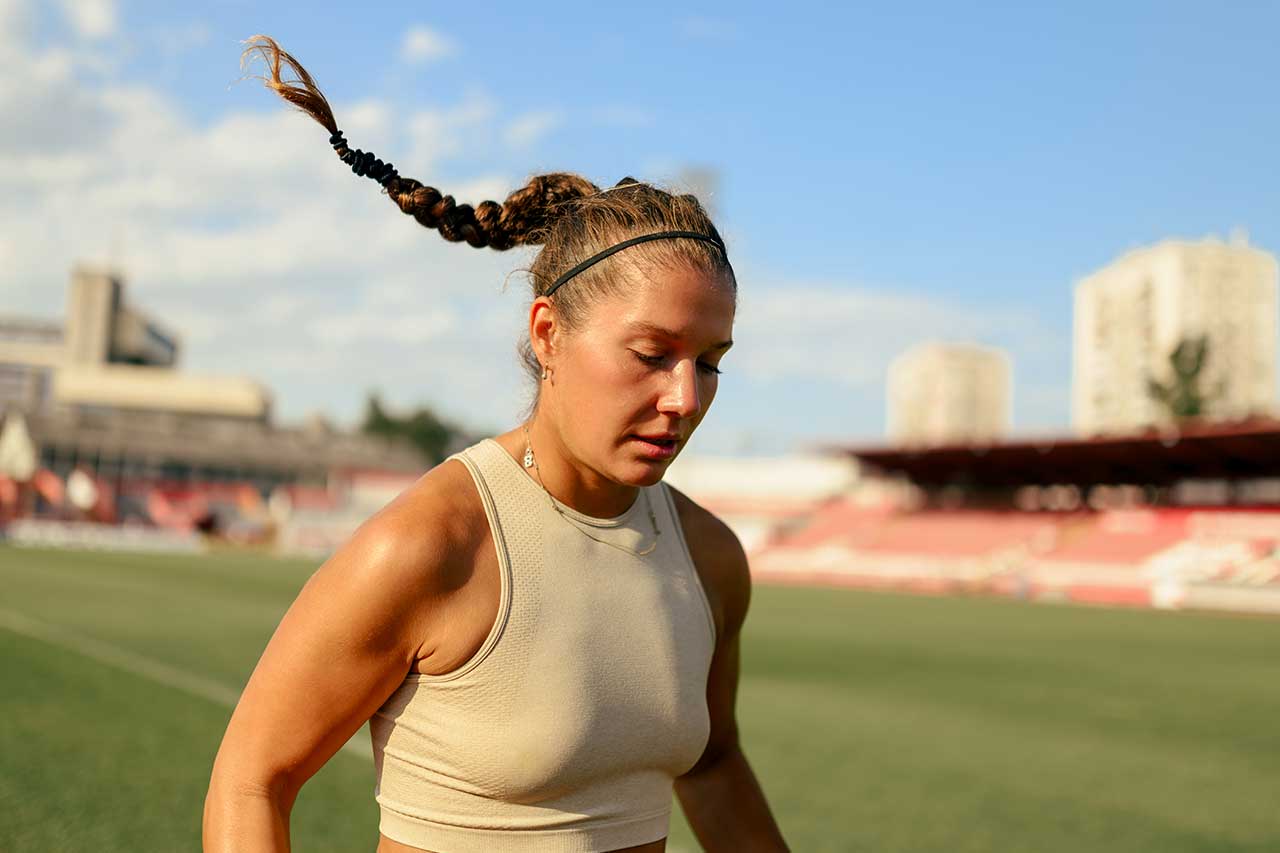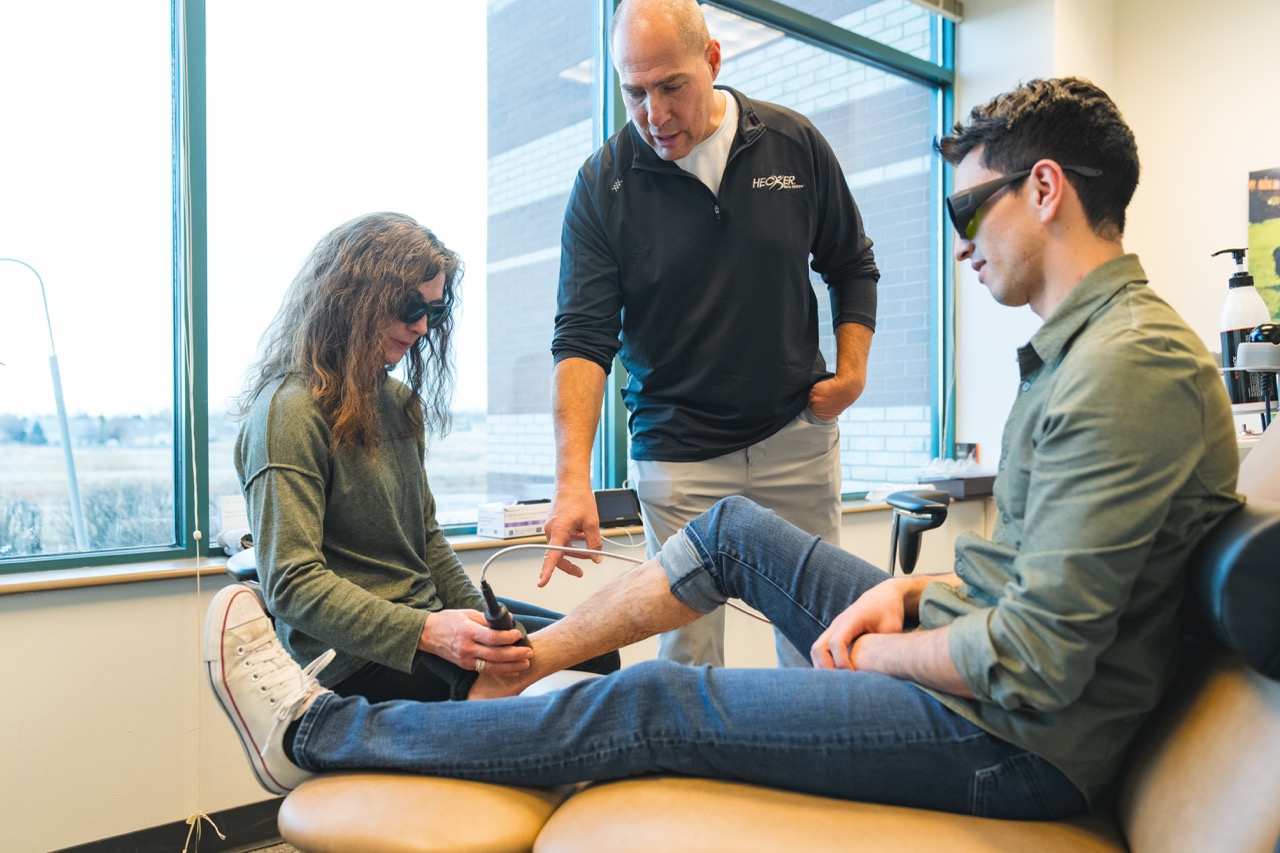Benefits of Non-Surgical Treatments for Athletes
Injuries can keep athletes off the field, but non-surgical treatments are changing the game. Learn how advanced therapies like laser therapy, TECAR, and compression therapy are helping athletes recover faster, avoid surgery, and maintain peak performance. Discover why non-invasive treatments are becoming the top choice for athletes seeking quicker recovery times and long-term success.

The Athlete’s Dilemma: Quick Recovery vs. Long-Term Health
For athletes, injuries are an unfortunate but inevitable part of the game. Whether it's a sprain, strain, or more serious injury, the decision to pursue treatment can feel like a balancing act. The drive to get back on the field, court, or track as quickly as possible must be weighed against the long-term health implications of various treatment options. In recent years, non-surgical treatments have gained traction among athletes looking for solutions that avoid the risks and lengthy recovery times associated with surgery. Thanks to technological advancements and innovative therapies, athletes now have access to a range of non-invasive options that promise quicker recovery and lasting results.
In this article, we'll explore why non-surgical treatments are increasingly favored by athletes and how they offer benefits that are not only safer but also more effective in preserving performance and extending athletic careers.
Why Athletes Prefer Non-Surgical Treatments
One of the primary concerns for athletes facing injury is minimizing downtime. Surgery often requires extended rehabilitation periods, which can sideline athletes for months at a time. For professionals and competitive athletes, this is not always an option. Non-surgical treatments, on the other hand, are designed to help athletes recover faster and return to peak performance in less time.
Minimized Downtime
Non-surgical treatments significantly reduce the amount of time athletes spend away from their sport. Procedures like laser therapy and TECAR therapy can speed up tissue repair, allowing athletes to return to training sooner than they would with a surgical recovery. The focus on stimulating the body’s natural healing process means that athletes can begin rehabilitation quickly, with treatments often requiring only a few sessions.
Avoiding Surgery-Related Risks
Surgery carries inherent risks such as infection, complications from anesthesia, and the possibility of incomplete healing. Athletes are particularly wary of these risks because they can lead to prolonged recovery times or even recurring issues that may jeopardize their career. Non-surgical treatments eliminate the need for invasive procedures, meaning less risk of complications and a more predictable recovery outcome.
Better Long-Term Outcomes
Many athletes find that non-surgical treatments not only reduce the immediate impact of an injury but also provide better long-term results. For instance, therapies like TECAR and Piezoelectric treatments promote deep tissue healing, improving the strength and flexibility of injured tendons and muscles. This kind of recovery helps athletes maintain their physical abilities and prevents re-injury, which is crucial for long-term performance.
Key Non-Surgical Treatment Options for Athletes
Thanks to advancements in sports medicine, there are numerous non-surgical treatment options available to athletes. These therapies are designed to accelerate healing, manage pain, and improve overall mobility without the need for invasive surgery.
Laser Therapy
Laser therapy is a cutting-edge treatment that uses focused light to reduce inflammation and stimulate tissue repair. It’s particularly effective for treating soft tissue injuries, such as sprains and strains, which are common among athletes. This therapy not only reduces pain but also speeds up the healing process, allowing athletes to return to their sport faster.
TECAR Therapy
TECAR therapy, a form of radiofrequency therapy, is known for its ability to speed up the healing of muscle and tendon injuries. By promoting blood flow and tissue regeneration, TECAR therapy helps athletes recover from injuries like hamstring tears and Achilles tendonitis with minimal downtime. It is especially effective for deep-tissue injuries that are difficult to treat with traditional methods.
Normatec Compression Therapy
Normatec compression therapy is another non-surgical treatment favored by athletes. Using advanced compression technology, this therapy increases circulation, reduces swelling, and promotes faster muscle recovery. It’s particularly beneficial after intense training sessions or competitions, making it a go-to treatment for athletes who need quick recovery.
Sanexas
Sanexas is a specialized treatment designed to manage chronic pain and promote recovery from long-term injuries. This therapy uses electrical currents to stimulate tissue healing and pain relief, making it a great option for athletes dealing with chronic conditions like stress fractures or persistent muscle strains.
Piezoelectric Therapy
Piezoelectric therapy is ideal for athletes dealing with localized injuries such as ligament or tendon damage. By using focused energy waves, this treatment reduces inflammation and promotes tissue healing, offering a non-invasive solution to injuries that would typically require surgery.
Common Conditions Treated Non-Surgically
Athletes commonly face a wide range of injuries, many of which can be effectively treated without surgery. Non-surgical methods provide relief and healing for injuries that would otherwise require invasive procedures, allowing athletes to maintain their level of activity.
Strains, Sprains, and Tears
Strains and sprains are among the most common injuries for athletes, and non-surgical treatments like laser therapy and TECAR are highly effective in treating them. These therapies accelerate recovery by promoting blood flow to the affected area, reducing inflammation, and stimulating tissue repair.
Tendon Injuries
Tendon injuries, such as Achilles tendonitis, are another common issue for athletes. Non-surgical treatments like TECAR and Piezoelectric therapy help restore tendon strength and flexibility, allowing athletes to return to their sport with less risk of re-injury.
Stress Fractures
Athletes, particularly runners, are susceptible to stress fractures due to repetitive impact. Non-surgical treatments can stimulate bone healing without the need for immobilization, reducing recovery time and getting athletes back to training faster.
Ligament Injuries
Ligament injuries, like those involving the ACL or ankle ligaments, can often be treated non-surgically with therapies like compression and TECAR. These treatments reduce inflammation and improve mobility, helping athletes avoid the lengthy recovery that typically accompanies ligament surgery.
Enhanced Recovery for Peak Performance
Non-surgical treatments offer several advantages that directly enhance an athlete’s recovery process and overall performance.
Faster Return to Play
One of the most significant benefits of non-surgical treatments is the ability to return to play sooner. By promoting natural healing and reducing inflammation, these therapies ensure that athletes are back to their training and competition schedules faster than they would be with surgery.
Performance Preservation
Non-surgical treatments are designed to preserve an athlete’s physical abilities. They focus on maintaining flexibility, strength, and mobility, all of which are essential for optimal performance. Athletes can rehabilitate their injuries without sacrificing their long-term athletic potential.
Less Impact on Long-Term Athletic Career
Surgical interventions, while sometimes necessary, can have long-term impacts on an athlete’s performance. Non-surgical treatments, by contrast, help athletes recover without the risk of losing range of motion or strength, enabling them to maintain peak performance throughout their career.
Surgery vs. Non-Surgical: A Game-Changer for Athletes
The decision between surgery and non-surgical treatments can have a significant impact on an athlete’s recovery timeline and career. While surgery may be necessary in some cases, non-surgical treatments are increasingly viewed as the preferred option due to their cost-effectiveness, shorter recovery time, and lower risk of complications.
Cost Comparison
Surgery often comes with high costs, not only for the procedure itself but also for the extended rehabilitation required afterward. Non-surgical treatments tend to be more affordable and require fewer resources, making them a more practical choice for many athletes.
Recovery Time Comparison
The recovery timeline for surgery can stretch into months, while non-surgical treatments often allow athletes to resume activity in a matter of weeks. This faster recovery is crucial for athletes who want to minimize time away from their sport.
Risk Factors
Surgery carries risks of infection, complications, and even long-term damage to the body. Non-surgical treatments, on the other hand, pose fewer risks and allow athletes to heal naturally, reducing the likelihood of complications.
Ready to Get Back in the Game?
For athletes facing the decision of how to recover from an injury, non-surgical treatments offer a compelling solution. With shorter recovery times, reduced risks, and better long-term outcomes, these treatments allow athletes to heal faster and get back to what they love—performing at their best.
If you’re an athlete dealing with an injury, consider exploring the non-surgical options available at Hecker Sports Medicine™. Our advanced therapies are designed to help you recover quickly and get back in the game. Schedule your appointment today and discover the benefits of non-surgical treatments.









